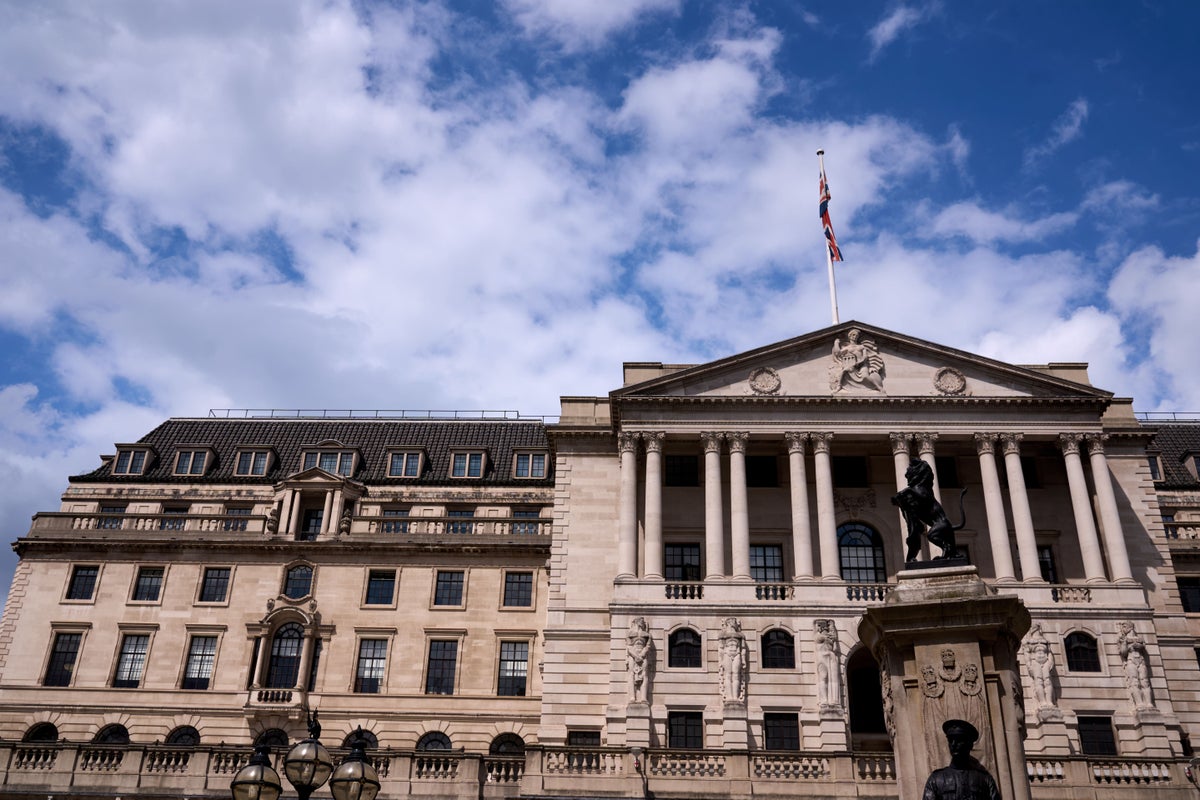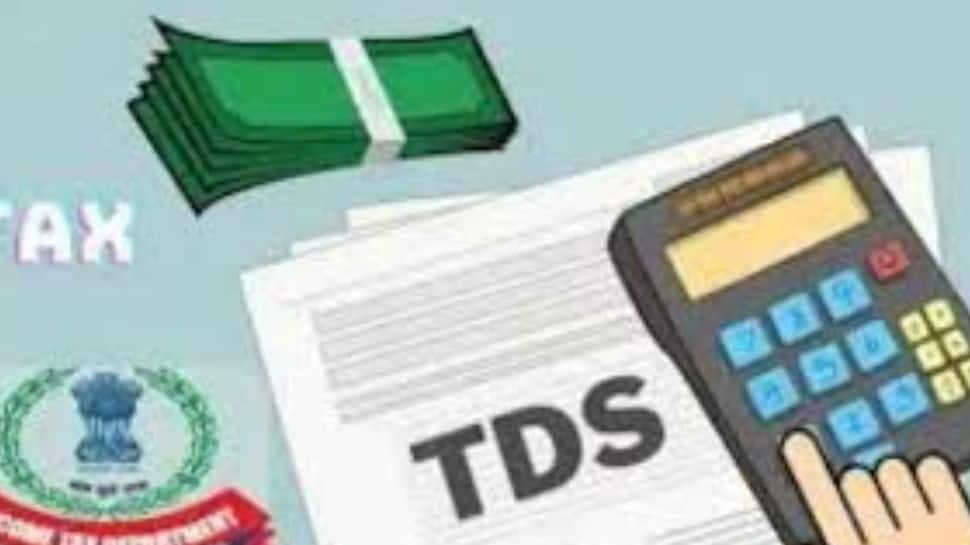Business
Bank of England rate-setter says risks to UK inflation justify slower cuts

Risks to the UK’s inflation outlook may have increased, justifying the need to take a cautious approach to cutting interest rates, a Bank of England policymaker has said.
Megan Greene, a member of the Bank’s rate-setting committee, said the current uncertainties and risks facing the economy meant it may be better to “skip” rate cuts rather than lower them quickly.
Speaking at Adam Smith Business School at the University of Glasgow, Ms Greene said “supply shocks” to the economy were likely to become more frequent.
This refers to events such as the Covid pandemic and the war in Ukraine that impact production and therefore can send prices higher.
She said the lessons learned from recent supply shocks “suggest that the risks to our inflation outlook have shifted to the upside”.
This was partly because of weak productivity growth in the UK as well as the rising unemployment rate, which both put pressure on overall inflation.
Ms Greene said it was clear that a “year-long tick up in inflation puts the UK in stark contrast with our developed economy peers”.
She also pointed to climate change and higher tariffs as factors that could generate supply shocks in the future.
However, the policymaker said the risks from global trade tensions had “abated somewhat” due to a “flurry of trade agreements” between the US and other countries helping to reduce uncertainty.
Ms Greene stressed that she was “not in favour of policy reversals by central banks” – referring to sharp interest rate cuts – and that could mean “skipping cuts” was a better approach.
“Instead, I believe an appropriate response to the uncertainty and risks we are currently facing should involve a cautious approach to rate cuts going forward,” she concluded.
Business
Tata Sierra 2025: Check Expected Price, Key Features And Stylish Design

Tata Sierra 2025: Tata Motors is all set to reintroduce its iconic SUV, the Tata Sierra, in 2025. The upcoming model brings back the beloved design of the original Sierra while adding a host of modern features, advanced technology, and multiple powertrain options, including electric. According to rumours, the SUV is expected to be priced between Rs 12 lakh to 25 lakh (ex-showroom).
Classic Design With a Modern Touch
The Tata Sierra 2025 comes with the classic boxy silhouette that made the original model a fan favourite. One of its most distinctive features, the “infinite window” design, also makes a comeback, preserving the SUV’s signature look. Tata has enhanced this retro design with modern styling elements such as LED light bars, flush door handles, and blackened C and D pillars, which give the Sierra a sleek appearance.
The blend of old-school charm and new-age detailing has generated strong excitement among SUV enthusiasts. With this launch, Tata aims to recreate the original Sierra while appealing to modern buyers seeking style and innovation.
Advanced and Tech-Focused Interior
The Tata Sierra 2025 features a high-tech triple-screen dashboard setup, consisting of a digital driver display, a central infotainment screen, and an additional screen for the co-driver. This setup offers easy access to key driving and entertainment functions.
The cabin will also feature Level 2 ADAS (Advanced Driver Assistance System), offering safety technologies such as a 360-degree camera, lane-keep assist, and dual-zone climate control. These features are designed to improve safety and convenience.
(Also Read: Oppo Reno 15 Series Set To Launch In China On Nov 17: Expected Models, Specs, Features)
Focus on Comfort and Luxury
Tata Motors is giving special attention to comfort in the Sierra 2025. The SUV will include features like a panoramic sunroof, ventilated seats, and connected car technology, enhancing both comfort and convenience. With these additions, the Sierra aims to deliver a premium driving experience comparable to higher-end SUVs in its segment.
The Sierra will also come equipped with seven airbags, a 360-degree camera, and additional driver-assistance features, ensuring maximum safety for passengers.
Multiple Engine Options
The upcoming Sierra will be available with petrol, diesel, and fully electric variants, offering buyers flexibility based on their preferences and driving needs.
Competition and Market Position
Once launched, the Tata Sierra 2025 will compete with SUVs such as the Hyundai Creta and Kia Seltos. While pricing is expected to be similar to these rivals, the Sierra’s latest design, advanced tech features, and the availability of an electric option are expected to set it apart in the crowded SUV market.
Business
Deadline Announced For Filing TDS/TCS Correction Statements — File On Time To Avoid Missing Credit In Form 26AS Or AIS

New Delhi: The Income Tax Department has announced the deadline for filing TDS (Tax Deducted at Source) and TCS (Tax Collected at Source) correction statements for the financial year 2024–25. Taxpayers and deductors are advised to file correction statements promptly to ensure that tax credits are properly reflected in their Form 26AS and Annual Information Statement (AIS).
The Central Board of Direct Taxes (CBDT) has urged all deductors to verify the accuracy of their TDS and TCS filings before the due date. Errors in these statements — such as incorrect PAN details, mismatched challan information, or inaccurate deduction entries — can lead to tax credit mismatches for taxpayers at the time of filing their Income Tax Returns (ITR).
The correction process allows deductors to amend any errors or omissions in the original TDS/TCS statement submitted via the TRACES (TDS Reconciliation Analysis and Correction Enabling System) portal. Timely filing of correction requests ensures that the corrected data is updated in the taxpayer’s Form 26AS and AIS, avoiding delays or discrepancies during tax filing.
Failure to submit the correction statement within the prescribed timeline may result in the taxpayer not receiving proper credit for taxes deducted or collected on their behalf. This could also trigger notices or mismatches while processing the ITR.
Taxpayers can check the status of their TDS/TCS credits on the Income Tax e-filing portal or through TRACES. The government continues to emphasize the importance of timely compliance to maintain transparency and accuracy in tax reporting.
Business
LIC Trims Stakes In HDFC, ICICI, Kotak; Bets On SBI, Yes Bank: Key Takeaways For Investors

Last Updated:
According to data, LIC added 6.41 crore shares of SBI during the quarter, amounting to an investment of roughly Rs 5,285 crore

LIC
Life Insurance Corporation of India (LIC), the country’s largest institutional investor with an equity portfolio worth over Rs 16 lakh crore, made bold portfolio moves in the September quarter, trimming its holdings in top private sector lenders—HDFC Bank, ICICI Bank, and Kotak Mahindra Bank—while sharply increasing exposure to public sector giant State Bank of India (SBI) and the smaller Yes Bank.
According to data from Prime Database, LIC added 6.41 crore shares of SBI during the quarter, amounting to an investment of roughly Rs 5,285 crore. In a contrarian move, the insurer also quadrupled its stake in Yes Bank—from less than 1% in June to 4% by September—even as several domestic institutional investors reduced their exposure to the stock.
At the same time, LIC sold shares worth an estimated Rs 3,203 crore in HDFC Bank, Rs 2,461 crore in ICICI Bank, and Rs 2,032 crore in Kotak Mahindra Bank. The sell-down caused overall insurance company holdings in these lenders to drop by 8–10% sequentially, marking LIC’s sharpest pullback from India’s leading private banks in recent years, Prime Database noted.
“A significant trend in the market is the resilience of the PSU banking space. This segment is even now attractively valued in a market which is richly valued,” said VK Vijayakumar of Geojit. “The prospects of this segment look bright in the context of the coming merger of PSU banks.”
The timing of LIC’s shift is notable. Even as the insurer increases exposure to public lenders, foreign investors have been pouring capital into private banks in 2025. Emirates NBD acquired a 60% stake in RBL Bank for $3 billion, Sumitomo Mitsui boosted its holding in Yes Bank to 24.2% following a $1.6 billion investment, and Blackstone bought nearly 10% of Federal Bank for Rs 6,196 crore.
Market expert Neeraj Dewan cautioned that valuations of PSU banks already reflect high expectations. He noted that while smaller PSU banks have delivered decent results, sustaining momentum will depend on how well they capture loan demand amid easing interest rates and improved liquidity. Dewan warned that after a strong rally, even a slight earnings miss could trigger investor disappointment.
LIC’s broader equity strategy during the quarter underscored its value-oriented approach. The insurer increased stakes in 68 NSE-listed companies, with an average decline of 5.55% in their purchase prices—indicating opportunistic buying in beaten-down counters—while trimming positions in 94 firms that saw stable prices, consistent with profit-taking behavior.
Brokerage Motilal Oswal highlighted that both private and public sector banks delivered solid Q2 results. Private lenders benefited from stronger net interest margins and healthy credit growth, while PSU banks also reported robust performance. Many banks, it added, have guided for further margin expansion in the second half of FY26, supported by the recent cash reserve ratio (CRR) cut and improving growth momentum.
ArunaGiri N, CEO of Trustline Holdings, remarked that the recent wave of foreign direct investment could be an early sign of broader institutional inflows. He suggested that FDI often precedes renewed foreign institutional investor (FII) participation, implying a potential comeback of FIIs in India’s private banking space.
The performance gap between PSU and private banks has been evident in recent months. Over the past three months, the Nifty PSU Bank index has surged more than 21%, while the broader Nifty Bank index has gained just over 4%.
According to Shibani Sircar Kurian of Kotak Mahindra AMC, valuations in the banking sector remain attractive relative to historical levels. She maintained a positive view on the space, with a slight preference for private banks but a focus on larger PSU lenders that still offer improving return ratios and favorable valuations. Kurian also noted that bigger PSU banks are better positioned to benefit from rising retail credit demand and lower funding costs as deposit rates ease.
Meanwhile, the government is reportedly considering allowing direct foreign investment in state-run banks of up to 49%, more than double the current ceiling. Analysts at Nuvama estimate that such a move could trigger as much as $4 billion in passive inflows into PSU banks.

Aparna Deb is a Subeditor and writes for the business vertical of News18.com. She has a nose for news that matters. She is inquisitive and curious about things. Among other things, financial markets, economy, a…Read More
Aparna Deb is a Subeditor and writes for the business vertical of News18.com. She has a nose for news that matters. She is inquisitive and curious about things. Among other things, financial markets, economy, a… Read More
November 10, 2025, 15:35 IST
Read More
-

 Business1 week ago
Business1 week agoAndy Jassy Reveals Real Reason Behind Amazon 14,000 Job Cuts — And It’s Not AI
-

 Sports1 week ago
Sports1 week agoTudor’s Juve exit means McKennie must prove himself all over again
-

 Politics1 week ago
Politics1 week agoPolitical violence kills almost 300 since Hasina’s fall: rights group
-

 Politics1 week ago
Politics1 week agoIran vows to rebuild nuclear sites ‘stronger than before’
-

 Sports1 week ago
Sports1 week agoPakistani runners make their mark at Istanbul Marathon
-

 Entertainment1 week ago
Entertainment1 week agoPresident Zardari to attend Second World Summit for Social Development in Doha
-

 Tech1 week ago
Tech1 week agoStep Away From Screens With the Best Family Board Games
-

 Politics1 week ago
Politics1 week agoTwo arrested after multiple people stabbed on UK train, police say





